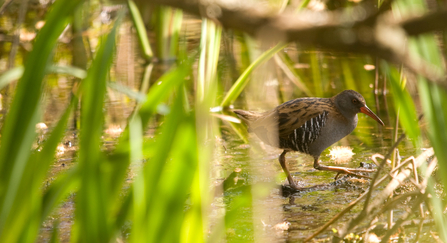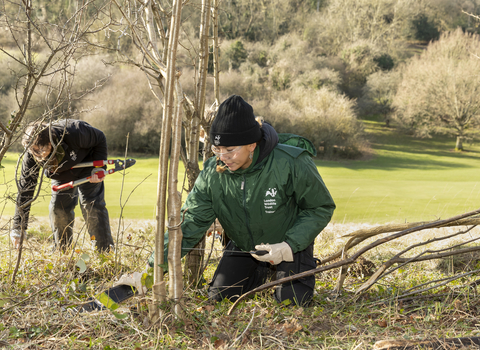To be honest, going through hundreds of videos and not seeing anything was a bit draining at first. But then you come across footage of an elusive species that you'd never normally see in person and it's so exciting. Catching that one video of a grey heron, a water rail feeding, or a robin and a great crested woodpecker dancing together makes you want to keep looking! Using camera traps allows you to capture these great natural moments of various species away from the human eye.

Grey Heron Credit Neil Aldridge
I learnt that when setting up a camera trap you have to keep a few things in mind:
1. Unfortunately, the equipment could be stolen, so it must be secure and locked down.
2. Placing the cameras as far away from visitors gets better results.
3. Keep the cameras hidden, even from the wildlife. I know what you’re thinking, “animals don’t care about the equipment." But some are smart and they can notice things that look unnatural in their environment and stay away from it.
4. Another thing to look out for is placement, as I was working in a wetland habitat a lot of the areas to place the cameras would involve riverbanks or water. Because of this the water level could rise or drop, which could help by mixing up the species that came towards the camera but there was also a risk that the camera could get damaged.
One of our cameras did get damaged once, and we lost a bit of footage which could have been a great source of data.
So depending on where you are working and the type of terrain you’re in, be aware of where you place the camera. I learnt that if I was placing it near a riverbank, it was good to fix it onto a sturdy tree trunk at knee height. And to make sure the camera is secured because you have to keep that strong winds could blow a poorly fastened camera into the river.
When gathering the data we would go through every video of the specific area we were in, I was looking into the River Lea and the Wier. It was very surprising to me to see the different species you would see in the footage on just one camera.

Water rail credit Amy Lewis
As you go through the videos, you take down the name of the species, time, date, where it was seen and also how many there was, and for example, if you see another video which contains two of a specific species but on the same day, you just update the previous data with the number of species increased. And when it’s a new day, you start the process again.
It could get a bit repetitive, but when you catch that one video of the rare species, you want to keep going all over again.

Keeping it Wild Trainees Credit Penny Dixie
About Keeping it Wild
Keeping it Wild is an ambitious project, funded by National Lottery Heritage Fund, that will empower and inspire 600 young people aged 11-25, from backgrounds currently under-represented in natural heritage, to gain vital skills while discovering, conserving and sharing their experiences of the capital’s wild spaces.
